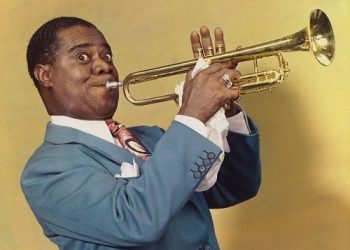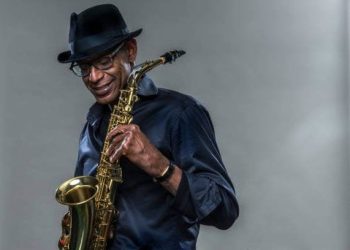Trumpet players occupy a distinguished place in the pantheon of music, wielding an instrument known for its brilliant timbre, dynamic range, and expressive versatility. Across genres—from the regal fanfares of classical compositions to the soul-stirring solos of jazz, the vibrant blasts of rock and pop, to the rhythmic leads in Latin music—the trumpet stands out for its ability to convey a spectrum of emotions, from triumphant joy to profound melancholy.
The journey of a trumpet player combines rigorous technical mastery with the nuanced art of musical expression. Mastery over breath control, embouchure, and finger technique allows these musicians to navigate the complex landscape of their repertoire, whether executing the crisp, intricate passages of a Baroque concerto or improvising with fluid, melodic lines over a jazz standard. The physical demands of the instrument, requiring both endurance and precision, are matched by the intellectual and emotional engagement it demands.
Trumpet players often develop a deeply personal connection to their sound, crafting a tone that is uniquely their own. This personal tone, coupled with the ability to adapt to various musical contexts, marks the greatest of trumpet players. They are not just technicians but storytellers, capable of wielding the trumpet as a voice that speaks directly to the human experience, transcending cultural and linguistic barriers to touch the souls of listeners worldwide.
1. Woody Shaw
Woody Shaw, born on December 24, 1944, in Laurinburg, North Carolina, was a groundbreaking American jazz trumpeter, bandleader, and composer, renowned for his innovative approach to harmony, rhythm, and technique on the trumpet. Shaw’s contributions to jazz in the late 20th century pushed the boundaries of the genre, and he is often credited with revitalizing and advancing the technical and harmonic language of modern jazz trumpet playing.
Coming into prominence in the late 1960s and throughout the 1970s, Shaw was a pivotal figure in the post-bop movement, introducing complex harmonic structures and an advanced theoretical approach that set new standards for jazz improvisation and composition. His style, characterized by its sophistication, bold intervallic leaps, and a unique tonal quality, distinguished him as one of the most innovative and influential jazz musicians of his generation.
Shaw worked with a variety of jazz legends, including Horace Silver, Art Blakey, and Eric Dolphy, contributing significantly to the evolution of jazz while developing his distinctive voice. His leadership on albums such as “Blackstone Legacy,” “Rosewood,” and “Woody Shaw Live Volume One” showcased his prowess as a composer and his vision for the future of jazz.
Despite facing personal challenges, including partial blindness and a tragic accident that led to the loss of his arm, Shaw’s musical output remained prolific until his untimely death on May 10, 1989. His legacy is that of a visionary who expanded the possibilities of jazz trumpet, inspiring generations of musicians with his technical mastery, innovative harmonic concepts, and the emotional depth of his playing. Woody Shaw’s contributions to jazz endure, cementing his status as one of the most important and influential trumpeters in the history of the genre.
2. Bix Beiderbecke
Bix Beiderbecke (March 10, 1903 – August 6, 1931) was an American jazz cornetist, pianist, and composer, who is regarded as one of the most influential jazz soloists of the 1920s. With a distinctive tone and innovative approach to improvisation, Beiderbecke’s style contrasted with the hotter, more forceful playing of other musicians of his era, such as Louis Armstrong. Instead, Beiderbecke’s playing was characterized by its lyrical, melodic quality, and his subtle use of harmony, which has been described as ahead of its time.
Born in Davenport, Iowa, Beiderbecke was largely self-taught and developed a keen interest in jazz after hearing the Original Dixieland Jazz Band’s recordings. Despite facing opposition from his family regarding his musical career, Beiderbecke pursued his passion, eventually joining bands like the Wolverine Orchestra and later, the influential Jean Goldkette and Paul Whiteman orchestras.
Beiderbecke’s recording career, though brief, produced many classics of early jazz, including “Singin’ the Blues,” “I’m Coming Virginia,” and “In a Mist,” the latter showcasing his talents as a pianist and composer. His music influenced many later jazz musicians, including Lester Young, who admired Beiderbecke’s smooth and relaxed playing style.
Tragically, Beiderbecke’s career was cut short by his premature death at the age of 28, due to his struggles with alcoholism. Despite his short life, Beiderbecke’s legacy in the jazz world is profound; he is remembered for his innovative contributions to the genre and his unique musical voice, which continue to inspire musicians and jazz enthusiasts. His life and music have been celebrated in numerous biographies, films, and music festivals, ensuring that his influence endures.
3. Nat Adderley
Nat Adderley (November 25, 1931 – January 2, 2000) was an American jazz cornetist who played an instrumental role in the development of hard bop and soul jazz during the mid-20th century. Born in Tampa, Florida, he was the younger brother of the legendary alto saxophonist Julian “Cannonball” Adderley, with whom he frequently performed and recorded. Nat Adderley’s career was distinguished by his rich, warm tone and lyrical approach to the cornet, a brass instrument similar to the trumpet but with a more mellow sound.
Adderley initially began his career on the trumpet but switched to the cornet, feeling it better suited his musical expression. He first gained significant attention in the jazz world as a member of his brother Cannonball’s quintet, where his playing was a key component of the group’s sound. Together, the Adderley brothers were at the forefront of the hard bop movement, blending bebop with blues, gospel, and soul influences.
One of Nat Adderley’s most famous compositions is “Work Song,” which has become a jazz standard covered by numerous artists across various genres. His discography as a leader includes acclaimed albums like “Work Song,” “That’s Right!,” and “Sayin’ Somethin’.” Throughout his career, Adderley collaborated with a host of prominent jazz musicians, including Wes Montgomery, Sonny Rollins, and Nancy Wilson, further establishing his reputation as a versatile and innovative musician.
Despite being somewhat overshadowed by his brother’s immense popularity, Nat Adderley’s contributions to jazz were significant. His work helped define the soul jazz genre, and his legacy is carried on through his compositions and the continued appreciation of his recordings. Nat Adderley’s warm cornet sound and his ability to blend lyrical melody with rhythmic drive have ensured his place as one of the notable figures in jazz history.
4. Roy Eldridge
Roy Eldridge, born on January 30, 1911, in Pittsburgh, Pennsylvania, was a trailblazing American jazz trumpeter, bandleader, and vocalist whose virtuosic skill and creative improvisational style bridged the gap between the traditional jazz of Louis Armstrong and the bebop innovations of Dizzy Gillespie. Known as “Little Jazz” for his short stature and fiery, intense playing, Eldridge’s influence on the development of jazz trumpet playing is profound, marking him as a key figure in the transition from swing to modern jazz.
Eldridge began his professional music career in the early 1930s, quickly gaining recognition for his remarkable technique, inventive use of harmony, and the emotional depth of his solos. His ability to play with both power and sensitivity, coupled with his fearless approach to improvisation, made him a standout performer in the jazz scene of his time. Eldridge’s tenure with the Fletcher Henderson Orchestra and later with Gene Krupa’s band brought him national fame, particularly through his dynamic solos on recordings like “Rockin’ Chair.”
Throughout his career, Eldridge broke racial barriers, becoming one of the first African American musicians to be featured in a prominent role in otherwise white bands during an era of segregation. His collaborations with many of the jazz greats, including Art Tatum, Billie Holiday, and Coleman Hawkins, showcased his versatility and ability to adapt to various jazz styles.
Eldridge’s influence extended beyond his trumpet playing; his vocal performances also contributed to his legacy as a multifaceted jazz musician. Despite facing challenges, including racial discrimination and the physical demands of his playing style, Eldridge continued to perform into the 1980s, leaving an indelible mark on the jazz world.
Roy Eldridge passed away on February 26, 1989, but his pioneering contributions to jazz trumpet, his groundbreaking improvisational techniques, and his role as a mentor to future generations of musicians ensure his place in the annals of jazz history. His work remains a cornerstone for students and aficionados of jazz, embodying the spirit and evolution of the genre.
5. Harry James
Harry James, born on March 15, 1916, in Albany, Georgia, was an American trumpeter, bandleader, and composer who played a pivotal role in the swing era of jazz. His virtuosic trumpet playing, characterized by a brilliant tone, technical mastery, and emotive style, made him one of the era’s most renowned musicians. James’s influence extended beyond jazz into the realms of pop and film music, showcasing his versatility and broad appeal.
James began his career in the late 1930s, playing with Benny Goodman’s orchestra, where he gained significant attention for his solos. His success with Goodman led him to form his own band in 1939, which quickly became one of the most popular swing bands of the time. James had a knack for spotting talent and helped launch the careers of several vocalists, including Frank Sinatra, who got his big break singing with the Harry James Orchestra.
His recordings, such as “You Made Me Love You,” “Trumpet Blues and Cantabile,” and “I’ve Heard That Song Before,” became hits, cementing his status as a leading figure in the music world. James’s style evolved over the years, incorporating elements of bebop and cool jazz, though he always remained rooted in the swing tradition.
James was also known for his contributions to film music, both as a composer and performer, appearing in several movies and contributing to their soundtracks. His charismatic stage presence and the visual flair of his performances added to his appeal.
Despite changes in musical tastes over the decades, James continued to perform and record until his death on July 5, 1983. His legacy lives on through his recordings, which continue to inspire musicians and delight audiences. Harry James’s impact on jazz and popular music is remembered for his exceptional skill as a trumpeter, his successful bandleader career, and his ability to connect with a wide range of listeners.
6. Donald Byrd
Donald Byrd (December 9, 1932 – February 4, 2013) was an American jazz and rhythm and blues trumpeter, educator, and bandleader. Known for his lyrical, blues-based approach and innovative contributions to both hard bop and fusion jazz, Byrd’s career spanned several decades, during which he explored a wide range of musical styles, from bebop to funk, soul, and even early hip-hop influences.
Byrd first gained prominence in the 1950s as a member of Art Blakey’s Jazz Messengers, where he played alongside jazz luminaries such as Horace Silver and Hank Mobley. His technical proficiency and expressive playing quickly established him as a leading figure in the hard bop scene. Byrd’s early work as a leader, including albums like “Byrd in Hand” and “Royal Flush,” showcased his inventive approach to jazz composition and improvisation.
In the late 1960s and 1970s, Donald Byrd embraced a more electric sound, incorporating elements of funk, soul, and R&B into his music. Albums like “Black Byrd” and “Places and Spaces” were pivotal in the development of jazz-funk and fusion, featuring groovy rhythms, electric instruments, and sophisticated arrangements. These efforts not only broadened Byrd’s audience but also played a significant role in shaping the direction of jazz and popular music at the time.
Beyond his work as a performer and recording artist, Byrd was also a respected educator, holding teaching positions at several prestigious institutions, including Rutgers University, Howard University, and the Oberlin Conservatory of Music. He was instrumental in developing jazz studies programs and mentored numerous young musicians who would go on to have successful careers in jazz and other genres.
Donald Byrd’s contributions to music were recognized with several awards, including a Grammy nomination and an appointment as a Jazz Master by the National Endowment for the Arts. His legacy is that of a versatile and innovative musician who left an indelible mark on jazz and popular music.
7. Arturo Sandoval
Arturo Sandoval, born on November 6, 1949, in Artemisa, Cuba, is a virtuoso jazz trumpeter, pianist, and composer, whose remarkable career spans several decades and encompasses a wide range of musical genres, including jazz, classical, and Latin music. Sandoval, a protégé of the legendary jazz trumpeter Dizzy Gillespie, defected from Cuba in 1990 during a European tour, seeking freedom to express himself musically and personally. Since then, he has become one of the most acclaimed trumpeters in the world, known for his dazzling technical ability, warm tone, and emotional depth.
Sandoval’s journey in music began with classical training before he discovered his passion for jazz—a genre that allowed him to explore and expand his incredible range, rapid articulation, and mastery of complex rhythms. His work has been celebrated with numerous awards, including 10 Grammy Awards, 6 Billboard Awards, and an Emmy Award, highlighting his contributions to both music and culture.
Beyond his prowess as a trumpeter, Sandoval is an accomplished pianist and composer, having written scores for films and television as well as recording classical pieces. His discography reflects a dedication to exploring and merging different musical traditions, showcasing his versatility as an artist.
Arturo Sandoval’s impact extends beyond his music. He is also a respected educator, sharing his knowledge and experience with young musicians around the world. His life story, marked by his defection and subsequent success in the United States, was dramatized in the HBO film “For Love or Country: The Arturo Sandoval Story,” bringing his inspiring story to a wider audience.
As a musician and a human being, Sandoval embodies the spirit of perseverance, creativity, and cross-cultural exchange, making him a luminary figure in the world of music. His contributions to jazz and classical music continue to resonate, inspiring both audiences and future generations of musicians with his passion, innovation, and boundless talent.
8. Maynard Ferguson
Maynard Ferguson (May 4, 1928 – August 23, 2006) was a Canadian jazz trumpeter and bandleader known for his remarkable high-note trumpet playing and contributions to the genres of big band jazz and jazz fusion. Ferguson’s powerful, high-energy playing style and his ability to hit incredibly high notes with accuracy and musicality made him one of the most distinctive and influential trumpeters in jazz.
Ferguson began his career in the big bands of the 1940s, playing with notable leaders like Boyd Raeburn, Jimmy Dorsey, and Charlie Barnet. He gained significant recognition during his tenure with the Stan Kenton Orchestra in the early 1950s, where his virtuosic high-note playing became a standout feature of the band’s sound.
In the 1960s and 1970s, Ferguson formed his own bands, including the Birdland Dreamband, and later, groups that delved into jazz-rock and fusion, attracting younger audiences with albums like “Conquistador” and “Primal Scream.” These albums featured hit singles like “Gonna Fly Now,” the theme from the movie “Rocky,” which brought Ferguson to a wider audience beyond traditional jazz circles.
Ferguson was also known for his innovative approach to band leadership, incorporating elements of rock, funk, and world music into his repertoire and employing talented young musicians who would go on to successful careers of their own. His bands served as a launching pad for numerous future jazz stars.
Beyond his performing career, Ferguson was dedicated to music education, conducting clinics and workshops for young musicians throughout his life. He inspired generations of trumpeters with his technique, endurance, and creative approach to jazz.
Maynard Ferguson’s legacy is celebrated for his contributions to expanding the technical and expressive possibilities of the trumpet in jazz and for his role in bridging the gap between different genres within the music.
9. Clifford Brown
Clifford Brown (October 30, 1930 – June 26, 1956), also known as “Brownie,” was an American jazz trumpeter who left a significant mark on the music world despite his brief life. Renowned for his warm, rich tone and extraordinary technique, Brown emerged as one of the most influential trumpeters in the history of jazz, contributing to the development of the hard bop style in the 1950s. His approach combined elements of bebop complexity with a more melodic and soulful expression, paving the way for future generations of jazz musicians.
Born in Wilmington, Delaware, Brown showed an early talent for music, quickly mastering the trumpet and making a name for himself in the jazz scenes of Philadelphia and New York. His career was marked by notable collaborations with leading jazz figures of the time, including Tadd Dameron, Lionel Hampton, Art Blakey, and Max Roach. His partnership with Roach led to the formation of the Clifford Brown-Max Roach Quintet, which is considered one of the quintessential hard bop ensembles. The group produced several classic albums, including “Clifford Brown & Max Roach” and “Study in Brown,” showcasing Brown’s virtuosic playing and compositional skills.
Brown’s playing was characterized by a flawless technique, imaginative improvisation, and an ability to convey deep emotion through his instrument. He was also noted for his clean lifestyle, contrasting the troubled lives of many of his contemporaries in the jazz world.
Tragically, Clifford Brown’s career was cut short when he died in a car accident at the age of 25. Despite his brief career, Brown’s influence on jazz is profound. He left behind a legacy of recordings that continue to inspire and influence musicians. He is remembered not only for his exceptional musicianship but also for his positive and humble personality. Brown’s approach to the trumpet and his contributions to jazz composition and improvisation have made him a lasting figure in the genre, celebrated through annual festivals, scholarships, and continued admiration from jazz enthusiasts and musicians alike.
10. Wynton Marsalis
Wynton Marsalis, born on October 18, 1961, in New Orleans, Louisiana, is a distinguished American trumpeter, composer, educator, and music director known for his profound impact on jazz and classical music. As a leading figure in jazz, Marsalis has been instrumental in reviving interest in jazz as a vital and culturally significant American art form. His achievements in both jazz and classical music are unparalleled, making him the first artist to win Grammy Awards in both genres in the same year, a feat he repeated.
Marsalis’s upbringing in a musically rich environment, with his father Ellis Marsalis Jr., a renowned pianist and music educator, deeply influenced his musical path. Wynton emerged on the scene as a prodigy, attending Juilliard and quickly becoming a prominent figure in the jazz community, playing with Art Blakey’s Jazz Messengers and forming his own ensembles.
His discography spans numerous albums, where his compositions and performances showcase a deep respect for the jazz tradition while also exploring contemporary themes and complex musical forms. Marsalis’s works, such as “Blood on the Fields,” which won the Pulitzer Prize for Music, highlight his skill as a composer and his dedication to addressing social and historical issues through music.
As the artistic director of Jazz at Lincoln Center in New York City, Marsalis has been at the forefront of jazz education, advocating for the importance of jazz in American culture and its dissemination worldwide. Through his educational initiatives, performances, and compositions, he has played a crucial role in mentoring young musicians and broadening the audience for jazz.
Wynton Marsalis’s influence extends beyond his musical achievements; he is a cultural ambassador who has dedicated his career to uplifting the arts, education, and the human spirit through the power of music. His contributions to music and society have been recognized with numerous awards and honors, including the National Medal of Arts and the Pulitzer Prize, underscoring his lasting impact on the world of music and beyond.
11. Lee Morgan
Lee Morgan (July 10, 1938 – February 19, 1972) was an American jazz trumpeter, known for his virtuosic technique, expressive playing, and pivotal contributions to the hard bop and soul jazz genres. Born in Philadelphia, Pennsylvania, Morgan was a prodigy who joined Dizzy Gillespie’s big band while still a teenager, showcasing his remarkable talent early on. His career was marked by a series of highly acclaimed recordings, both as a leader and as a sideman with some of the most prominent jazz artists of his time, including Art Blakey’s Jazz Messengers, with whom he had a particularly significant association.
Morgan’s style was characterized by a bright, powerful tone, and a quick, inventive approach to improvisation. He was capable of delivering blistering fast runs as well as soulful, lyrical passages with equal finesse. One of his most famous compositions, “The Sidewinder,” released on the album of the same name in 1964, became a crossover hit, reaching beyond jazz audiences and helping to rejuvenate the Blue Note label financially. The success of “The Sidewinder” also sparked a trend in soul jazz, influencing many subsequent recordings.
Despite his success, Morgan’s life was troubled by addiction, which affected his career and personal life. His life was tragically cut short at the age of 33 when he was shot and killed by his common-law wife, Helen More, at a jazz club in New York City.
Despite his brief life, Lee Morgan’s impact on jazz is profound. He recorded more than 25 albums as a leader and appeared on dozens more as a sideman, leaving behind a rich legacy that continues to influence jazz musicians today. His work remains a cornerstone of the hard bop genre, celebrated for its intensity, complexity, and emotional depth.
12. Louis Armstrong
Louis Armstrong, born on August 4, 1901, in New Orleans, Louisiana, is one of the most iconic figures in the history of jazz. Known affectionately as “Satchmo” or “Pops,” Armstrong was a virtuoso trumpeter, distinctive vocalist, and charismatic performer whose influence on the development of jazz is immeasurable. His innovative approach to music transformed jazz from a group-based endeavor into a soloist’s art form, with his virtuosic trumpet playing and inventive vocal stylings setting new standards for jazz musicianship and expression.
Armstrong’s career spanned five decades, during which he produced a prolific body of work that includes timeless classics such as “What a Wonderful World,” “Stardust,” “La Vie En Rose,” and “West End Blues.” His recording of “West End Blues” in 1928 is particularly noted for its opening cadenza, which stands as one of the most celebrated moments in jazz history, showcasing his extraordinary technical skill and emotional depth.
Beyond his groundbreaking musical contributions, Armstrong’s charismatic stage presence and joyful spirit helped popularize jazz across the globe, making it accessible to a broad audience and establishing it as a major form of musical expression. His impact extended beyond music to influence the civil rights movement; though often subtle in his public statements, Armstrong’s significance as an African American cultural icon and his behind-the-scenes efforts supported the cause of racial equality.
Louis Armstrong’s legacy is not only preserved through his recordings but also in his enduring influence on countless musicians across various genres. His approach to improvisation, his distinctive vocal style, and his ability to convey deep emotion through music continue to inspire and influence artists around the world. Armstrong passed away on July 6, 1971, but his music and his contributions to jazz and American culture remain timeless, celebrating the joy and resilience of the human spirit.
13. Miles Davis
Miles Davis (May 26, 1926 – September 28, 1991) was an American jazz trumpeter, bandleader, and composer, widely regarded as one of the most influential and innovative musicians of the 20th century. His career spanned five decades, during which he was at the forefront of multiple developments in jazz, constantly evolving his sound and approach to music.
Davis was born in Alton, Illinois, and raised in East St. Louis. He moved to New York City in 1944 to study at the Juilliard School but soon dropped out to pursue a career in jazz. He gained initial fame in the late 1940s as a member of Charlie Parker’s quintet and quickly became a central figure in the birth of cool jazz with the release of the “Birth of the Cool” sessions in 1949 and 1950.
Throughout the 1950s, Davis continued to innovate, recording with the Miles Davis Quintet and releasing albums that defined the hard bop genre, such as “Workin’,” “Steamin’,” “Relaxin’,” and “Cookin’.” In 1959, he recorded “Kind of Blue,” which became the best-selling jazz album of all time and is considered a masterpiece for its use of modal jazz.
In the 1960s, Davis pushed the boundaries of jazz even further by incorporating electric instruments into his music, leading to the development of jazz fusion. Albums like “In a Silent Way” and “Bitches Brew” were revolutionary, blending jazz with rock, funk, and electronic music.
Davis’s career in the 1970s and 1980s was marked by experimentation with different musical styles, including pop, electronic music, and hip hop elements. Despite facing health issues and periods of inactivity, he continued to perform and record until his death in 1991.
Miles Davis’s influence extends beyond jazz to impact musicians across various genres. His approach to music, characterized by a constant search for new sounds and textures, has made him a symbol of artistic innovation. Davis received numerous awards during his lifetime, including eight Grammy Awards and a posthumous Grammy Lifetime Achievement Award. He was inducted into the Rock and Roll Hall of Fame in 2006, underscoring his broad impact on music.
14. Dizzy Gillespie
Dizzy Gillespie (October 21, 1917 – January 6, 1993) was an American jazz trumpeter, bandleader, composer, and singer, who was one of the key figures in the development of bebop and modern jazz. Born John Birks Gillespie in Cheraw, South Carolina, he was known for his virtuosic trumpet playing, characterized by its high velocity and complex harmonies, as well as his distinctive bent trumpet’s bell, which became his trademark.
Gillespie’s contributions to jazz were monumental. Alongside Charlie Parker, Thelonious Monk, and others, Gillespie was instrumental in the creation of bebop in the 1940s, a style that represented a major shift in jazz from the big band swing era. His compositions, such as “A Night in Tunisia,” “Groovin’ High,” “Salt Peanuts,” and “Manteca,” have become jazz standards and showcase his innovative approach to rhythm, melody, and harmony.
Beyond bebop, Gillespie was also a pioneer of Afro-Cuban jazz, merging bebop with Afro-Cuban rhythms to create a new, vibrant genre. His work in this area was influential in the development of Latin jazz, enriching the genre with complex rhythms and improvisational depth.
Gillespie was also known for his eccentric personality and sense of humor, which endeared him to fans and musicians alike. His impact on jazz extended beyond his music; he was a mentor to younger musicians, a global ambassador for jazz, and a vocal advocate for civil rights.
Throughout his career, Gillespie received numerous accolades, including the Grammy Lifetime Achievement Award, and he was inducted into the International Latin Music Hall of Fame. Dizzy Gillespie’s legacy is not only in the extraordinary body of work he left behind but also in the influence he exerted on generations of musicians, helping to shape the course of jazz for decades to come.
15. Freddie Hubbard
Freddie Hubbard, born Frederick Dewayne Hubbard on April 7, 1938, in Indianapolis, Indiana, was an American jazz trumpeter renowned for his powerful, fast-paced playing and pioneering contributions to the hard bop and post-bop styles of jazz. With a career spanning more than four decades, Hubbard’s virtuosity and innovative approach to the trumpet made him one of the most influential jazz musicians of his time.
Hubbard emerged on the jazz scene in the late 1950s and quickly established himself as a key figure in the evolution of modern jazz. His technical prowess, characterized by a brilliant high register, complex improvisations, and a bold, incisive tone, set new standards for trumpet playing. Throughout the 1960s, he contributed to seminal recordings with legendary artists such as John Coltrane, Ornette Coleman, Eric Dolphy, and Herbie Hancock, showcasing his versatility and creativity across various jazz subgenres.
As a bandleader, Hubbard recorded numerous acclaimed albums that have become jazz classics, including “Open Sesame,” “Ready for Freddie,” and “Red Clay.” These works highlight his compositional skills and his ability to lead ensembles with both intensity and sensitivity. “Red Clay,” in particular, is celebrated for its fusion of hard bop with elements of funk and soul jazz, illustrating Hubbard’s willingness to explore and expand the boundaries of jazz music.
Throughout his career, Hubbard faced challenges, including health issues related to his lips, which affected his playing in later years. Despite these obstacles, he continued to perform and record, adapting his style and maintaining his status as a revered figure in the jazz community.
Freddie Hubbard passed away on December 29, 2008, but his legacy lives on through his influential recordings and the generations of trumpeters he inspired. His contributions to jazz are a testament to his extraordinary talent, his innovative spirit, and his enduring impact on the music world.









